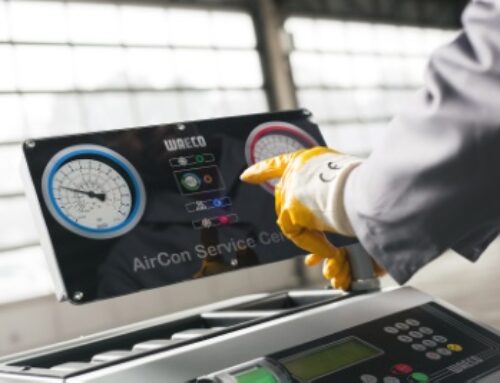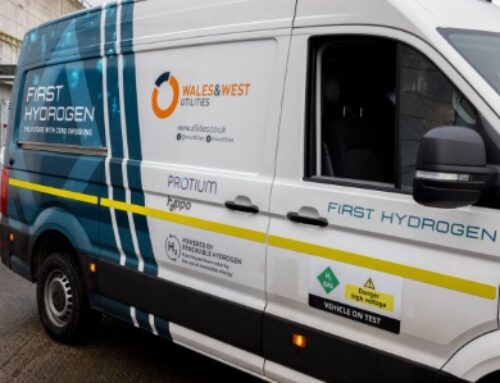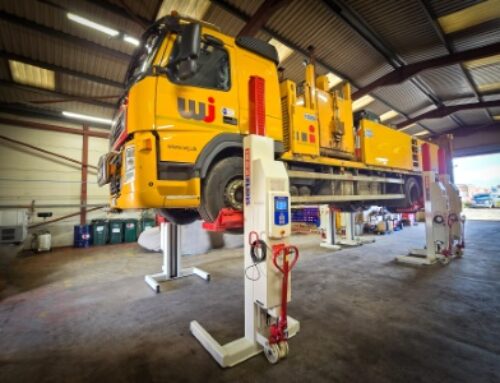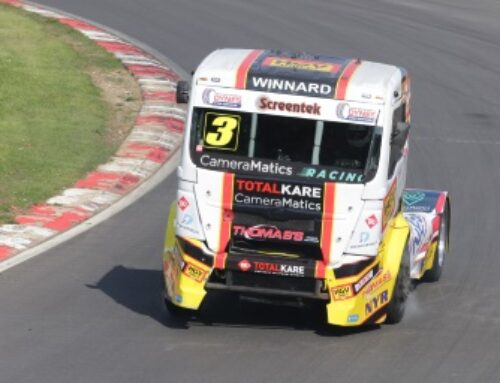Spafax highlights cost of mirror damage
 Commercial vehicle mirror technology provider Spafax International Ltd has highlighted the cost and safety benefits of its polycarbonate mirror range for truck and bus applications.
Commercial vehicle mirror technology provider Spafax International Ltd has highlighted the cost and safety benefits of its polycarbonate mirror range for truck and bus applications.
“Often the first item to be damaged on a commercial vehicle is the rear view mirror,” said Spafax’s Peter Furby. “Breakage often renders the vehicle immobile, not to mention the glass on the roadside causing punctures for other road users, including cyclists.”
Peter highlights the images opposite, produced by Loughborough University. The top image shows the extent of a driver’s view in a standard Class V kerb-view mirror, while the lower image shows the extended view available from a Spafax VM5 Class V mirror.
Whereas some mirrors actually create a blind spot despite being wide-angle, he says, Spafax Mirrors provide an improved field of vision, bridging the gap smoothly between main driving mirror and wide angle. In addition, the optical grade polycarbonate provides a crisp, clear image without distortions.
“I’ve recently spoken to and visited several large fleet operators that have stated that direct costs associated with mirror-related incidents were alarmingly high,” Peter Furby told Transport Operator.
Insurance excess rates can also rise considerably due to high volumes of claims for damaged mirrors, he added.
“One fleet operator stated [mirror damage] costs them £80,000 per annum as a group, as there are occasions when the mirror (which is the first thing that gets damaged) can result in the vehicle having to be recovered – or the complete arm assembly is damaged.”
The same fleet operator could save two-thirds of its current expenditure if not more, he contends, by specifying and retro-fitting Spafax unbreakable mirrors.
“Trials are currently underway with a number of fleet operators, with some of them opting for bright yellow mirrors in an effort to provide increased visual awareness for both driver and other road users to avoid vehicle-to-vehicle contact.”
He continued: “At a recent military exhibition in Paris, 75-80 per cent of the vehicles on show were fitted with Spafax mirrors. We are the world’s largest supplier to the military, exporting to 50 countries worldwide.”
The company hoped to replicate this British success story in the commercial vehicle sector, Peter added.
He also highlighted the benefits for bus operators of fitting larger and/or wide-angle mirrors to help reduce the chance of accidents involving cyclists and pedestrians.
Upgrading to the larger VM1 mirror series not only represents a 100 per cent increase in size, but also offers a wider angle lens, says Spafax, helping to reduce blind spots through increased visual awareness. Operators can additionally benefit from the 10-year lens warranty, thereby reducing their long-term cost of ownership.
“People waiting at bus stops or traffic lights waiting to cross the road are certainly not immune from being struck by overhanging rear view mirrors,” he said.
“To protect both the public and the bus operator, Spafax Mirrors are available in bright yellow for increased visibility.
“Nobody wants to be struck by a mirror, least of all one made of glass. All Spafax mirrors are made from unbreakable polycarbonate material similar to spectacles.”
This ensures they won’t break, shatter or splinter, says Spafax.











